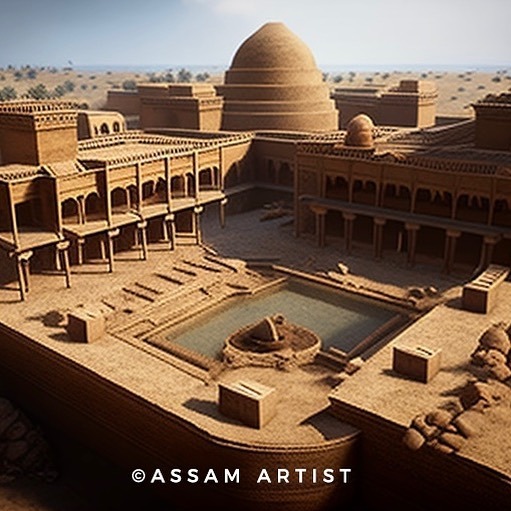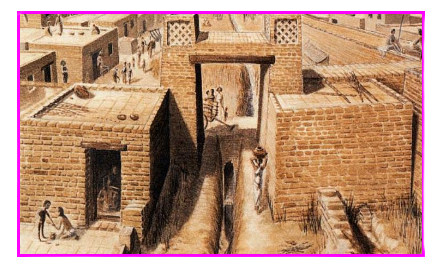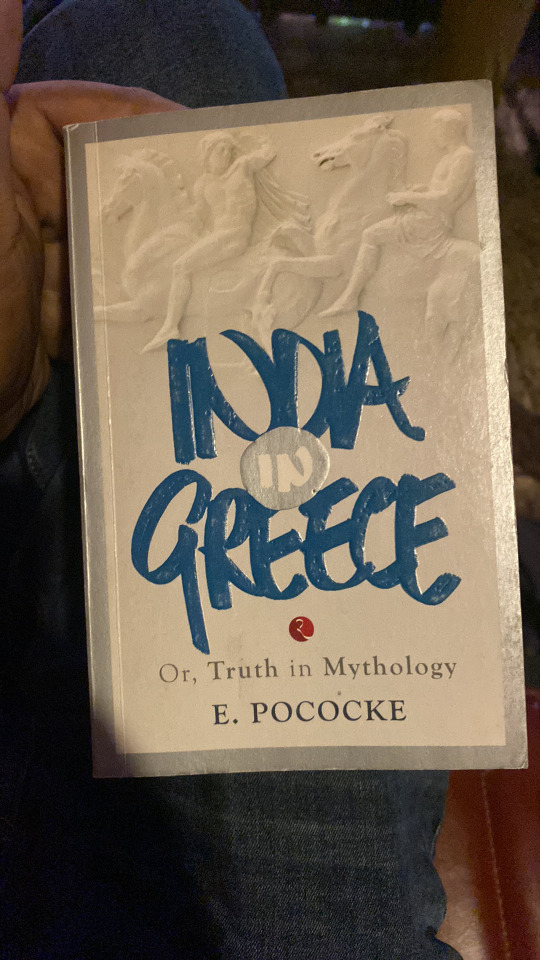#mohenjodaro
Text
Mesopotamia and Indus Valley were girlfriends 💅
I don't make the rules.
#mesopotamia#indus valley#harappan civilization#mohenjodaro#desiblr#desi tumblr#desi tag#desiposting#history#ancient civilizations
10 notes
·
View notes
Text
In flood-stricken Pakistan, where an unprecedented monsoon season has killed hundreds of people, the rains now threaten a famed archaeological site dating back 4,500 years.
The ruins of Mohenjo-daro, located in southern Sindh province near the Indus River, and a Unesco world heritage site, are considered among the best preserved urban settlements in south Asia. They were discovered in 1922, and mystery still surrounds the disappearance of its civilisation, which coincided with those of ancient Egypt and Mesopotamia.
The recent flooding has not directly hit Mohenjo-daro but the record-breaking rains have inflicted damage on the ruins, said Ahsan Abbasi, the site’s curator. “Several big walls which were built nearly 5,000 years ago have collapsed because of the monsoon rains,” Abbasi said.
He said dozens of construction workers under the supervision of archaeologists had started the repair work. Abbasi did not give an estimated cost of the damage.
The site’s landmark “Buddhist stupa”, a large hemispherical structure associated with worship, meditation and burial, remains intact, Abbasi said. But the downpours have damaged some outer walls and also some larger walls separating individual rooms or chambers.
Abbasi said the civilisation at Mohenjo-daro, also known as “Mound of the Dead” in the local Sindhi language, built an elaborate drainage system, which had been critical in flooding in the past.
18 notes
·
View notes
Text

0 notes
Text
To what extent has the urban planning and culture in the Indus Valley Civilization provided inputs to the present day urbanization? Discuss.

0 notes
Text

COLLECT YOURS NOW....
Dokra Art - Indian brass statue of Lakshmi Ganesh Saraswati - Primitive Indian folk art- A vintage Indian art form - presented by mollisarts. mollisarts for many more unique Indian art collectibles.
#tribalart#tribal#civilizations#mohenjodaro#brass#primitive#indianart#handicraft#lostwax#brassart#indianhistory#ganesh#ganpati#bappa#ganesha#mumbaikar#ganpatibappa#Saraswat#beautifulsaraswatimurti#lakshmi#laxmi#hindugoddess#hinduart#hindumythology#hindudeity#hinduism_#hindugodsandgoddesses#indianartist#indianfolkart#indianartists
0 notes
Photo

Mohenjo-Daro, Pakistan: Assam Artist prompted his Imagination through AI. Best visulization so far to imagine the Civilization, people and life 2500 BCE ago. #MohenjoDaro #Sindh #Pakistan #civilization (at Mohenjo-Daro) https://www.instagram.com/p/Co-Hl6BMPsN/?igshid=NGJjMDIxMWI=
0 notes
Photo

In this freezing February weather, with the trees still bare, the sky’s often grey hue and when it is sunny, glaring harshly through the trees, the lush deep forest green of Serpentine calls to me and makes me swoon extra hard. Vivid Forest Green Serpentine has been treasured throughout West Africa for more than a thousand years. These ancient hand shaped and drilled stone beads were found in Mauritania and Mali, where they are though to have been imported into Africa across important trade routes for Gold, Copper, and Salt at the height of the Empire of Mali. Their origin was the Indus Valley, which was the location of two major Ancient Cultures; the Harappan and Mohenjo-Daro Civilizations. These Precious Serpentine Beads are in the same configuration as they were purchased in Mali years ago. They have been lovingly restrung on fresh cotton cord by our New York City staff. If you’d like to read for about them, or make them your own follow the tag (or link in profile)! #serpentine #serpentinebeads #serpentinenecklace #ancientbeads #ancientnecklace #antiquebeads #antiquenecklace #antiquejewelry #forestgreen #forestgreenbeads #mali #mauritania #harrapancivilization #mohenjodaro #12thto16thcentury #wearablehistory #rarejewelry #uniquejewelry #winterstyle #winterfashion #uniquebeads #antiquegems #shop #nyc #unionsquare #beadsofparadise (at Beads of Paradise NYC) https://www.instagram.com/p/CoQmiStus_l/?igshid=NGJjMDIxMWI=
#serpentine#serpentinebeads#serpentinenecklace#ancientbeads#ancientnecklace#antiquebeads#antiquenecklace#antiquejewelry#forestgreen#forestgreenbeads#mali#mauritania#harrapancivilization#mohenjodaro#12thto16thcentury#wearablehistory#rarejewelry#uniquejewelry#winterstyle#winterfashion#uniquebeads#antiquegems#shop#nyc#unionsquare#beadsofparadise
0 notes
Photo

#tuhaiterayesansarsa❤️ #mohenjodaro #arrahman @arrahman #ipadprocreate #procreate #instaartist #letterart #lettering #letteringdaily #hindi #bollywoodsong #sashushreeke #सशुश्रीके https://www.instagram.com/p/CjlR--IjevH/?igshid=NGJjMDIxMWI=
#tuhaiterayesansarsa❤️#mohenjodaro#arrahman#ipadprocreate#procreate#instaartist#letterart#lettering#letteringdaily#hindi#bollywoodsong#sashushreeke#सशुश्रीके
0 notes
Photo

तू है मेरा ये संसार सारा मैं और मेरा प्यार सारा तेरे ही लिए है . . . . #mohenjodaro #rose #whiterose #youloveme #loveintheair #greenery #green #davejordan_5 https://www.instagram.com/p/CiaDdNMpUFu/?igshid=NGJjMDIxMWI=
1 note
·
View note
Video
youtube
Conocimientos Secretos sobre la verdadera historia de la Humanidad #civilizacionesavanzadasprehistóricas
Como veremos en diversos vídeos que están insertados en esta Publicación la verdadera historia de la humanidad, está comenzando a ser sacada a la luz, aunque aún los obstáculos y la desinformación es muy sutil pero fuertemente utilizada para confundir la lógica y la razón de aquellos que no somos especialistas en estas Difíciles y muy diversas disciplinas de las Ciencias, tanto arqueológicas, como de ingeniería a las que se están sumando toda la tecnología desarrollada mediante la computación, radar, y el uso de satélites, junto a la cosmología, astronomía y astrología. Todo esto pueden verlo en la Publicación del Blog LOGOS https://logosconocimientos.blogspot.com/2023/12/como-veremos-en-diversos-videos-que.html
La historia oficial muchas veces nos oculta la verdad que las evidencias encontradas en los yacimientos arqueológicos, cuando son analizadas utilizando métodos científicos, y aplicándole la lógica con un filtro de ingeniería práctica, de las técnicas que actualmente están a nuestro alcance, se nos muestra de forma clara y aunque parezcan increíbles, son la verdadera explicación de lo que en estos maravillosos yacimientos es sacado a la luz, mostrándonos un pasado remoto, del cual nada o a penas nada sabemos, pero que las últimas técnicas de análisis del terreno, el relieve y la densidad de lo que existe bajo tierra, en estos lugares salen a la luz Muchas veces hemos oído hablar de ciudades míticas que existieron en el pasado y que albergaban tesoros, sabiduría y poder.
Pero, ¿Qué hay de cierto en estas leyendas? ¿Se trata de simples fantasías o de realidades ocultas ver en el siguiente vídeo https://youtu.be/bdZHBP3658s?si=5RxMCt2coSLaEcA9 Un ejemplo claro es uno de los últimos vídeos subidos al Canal: "Mohenjo Daro y Harappa: El Misterio de una Civilización Aniquilada por Ataque Nuclear" Adéntrate en los misterios de Mohenjo Daro y Harappa, Lee y seguro que verás el vídeo completo, ya que lo que crees hasta ahora cambiará mediante pruebas científicas, las cuales no salieron a la luz hasta ahora, debido en primer lugar, porque cuando se descubrieron muchas de estas evidencias, aún se desconocía la energía Atómica, algo que hace tan solo Décadas conocemos, además de que hay algún tipo de interés, o mano negra que desea mantenernos en la ignorancia de la verdad sobre nuestra verdadera Historia. La antigua ciudad que yace bajo las arenas de Pakistán, ocultando secretos enterrados durante 4600 años (Seguramente muchísimo más). Descubre las evidencias sorprendentes de un "ATAQUE NUCLEAR" en el pasado remoto: miles de cadáveres, radiación mortal, piedras fundidas. ¿Fue Mohenjo Daro y Harappa víctimas de una guerra atómica librada por seres de otro mundo? Testimonios escalofriantes revelan cadáveres abrazados, sintiendo la muerte repentina causada por algo que descendió del cielo. Analizamos pruebas de radiación que desafían los límites mortales y materiales fundidos a temperaturas astronómicas. ¿Cómo explicar estos fenómenos en una civilización de hace más de 4600 años? Exploramos la conexión entre Mohenjo Daro, Harappa y los Vimanas, artefactos mencionados en antiguos textos indios que descendían del cielo y desataban explosiones. Investigaciones recientes revelan cristalizaciones misteriosas en desiertos africanos, similares a las descritas en estos textos. ¿Fue Mohenjo Daro y Harappa testigos de un conflicto cósmico? ¿Fueron extraterrestres los arquitectos de esta destrucción? Exploramos escrituras misteriosas y protoescrituras que conectan civilizaciones antiguas en todo el mundo. Descubre las piezas faltantes de una historia épica que se ha mantenido oculta en las sombras de Mohenjo Daro. Prepárate para un viaje hacia lo desconocido, donde la realidad supera la ficción. Únete a nosotros para desentrañar los enigmas de Mohenjo Daro y descubrir la verdad que ha estado oculta en las arenas del tiempo. Y que pueden ver https://youtu.be/eIl6SHGcvps?si=AroRQnGzXLeG2jTC
0 notes
Text
Mohenjo-Daro is an archaeological site in the province of Sindh, Pakistan.
Mohenjo-Daro is an archaeological site in the province of Sindh, Pakistan. Built around 2500 BCE, it was the largest settlement of the ancient Indus Valley Civilisation, and one of the world’s earliest major cities, contemporaneous with the civilizations of ancient Egypt, Mesopotamia, Minoan Crete, and Norte Chico.
With an estimated population of at least 40,000 people, Mohenjo-Daro prospered…

View On WordPress
#ancient history#archaeological site#harappan civilization#heritage sites of pakistan#Indus Valley Civilization#information mohenjodaro#Mohenjo Daro#mohenjo-Daro#mohenjodaro drawing#Pakistan#pakistan heritage sites#province of Sindh#top 10 unesco world heritage sites#unesco pakistan#unesco sites in pakistan#unesco world heritage#unesco world heritage sites#unesco world heritage sites in pakistan#world heritage#world heritage sites#world unesco sites
1 note
·
View note
Text
Bronze: #WorldWatercolorMonth2022
July is World Watercolor Month! To learn more about this, visit Doodlewash.
Did you know that the Dancing Girl from Mohenjodaro is the oldest known bronze statue in existence? It dates back to 2500 BCE.
Hahnemühle 100% Cotton Watercolor bookMaimeriBlu WatercolorMalden Salt Flakes
July Doodlewash prompts
Tools:
To find a list of dealers, who carry Hahnemühle products in the U.S. and Canada,…

View On WordPress
#industriamaimeri#WorldWatercolorGroup#WorldWatercolorMonth#@Hahnemühle FineArt#@Hahnemühle_USA#Bronze#Dancing Girl from Mohenjodaro#Doodlewash#Doodlewash prompts#house#silhouette#Statue#Watercolor
0 notes
Text
MODERN HISTORY
2ND BLOG _ The Indus Valley Civilization / HISTORICAL EVENT

The Indus Valley Civilization was one of the oldest urban civilizations, dating from 2500 BC to 1500 BC. Although research is still being done on how they handled the issue of water conservation in this interesting part of the world, some advanced water conservation and management practices can be named. In fact, the covered drains that run under the streets of the ruins of Mohenjodaro and Harappa show that their inhabitants were well versed in hygiene. The relevance that exists in relation to the problems of excessive water consumption and the events that occurred within this civilization are interestingly compatible, since at this point in the blog is where my theory is that in ancient times, water consumption was not as excessive as it is today, the reasons for this is not only because there was less population at that time, but because people knew how to distribute and appreciate the resources provided by the earth and they respected it very much.
The Indus Valley Civilization, which flourished along the banks of the Indus River and other parts of western and northern India about 5,000 years ago, had one of the most sophisticated urban water supply and sanitation systems in the world. Ruins such as Mohenjo-Daro in Sindh and Dholavira in Gujarat had settlements with some of the most sophisticated sanitation systems in the ancient world. They included drainage canals, rainwater harvesting, and street sewers. Sewage was disposed of through underground drains built with precisely laid bricks, and an elaborate water management system with numerous reservoirs was established. In the drainage systems, the drains from the houses were connected to the wider public drains laid along the main streets. The drains had holes at regular intervals for cleaning and inspection. Water from bathrooms on the roofs and upper floors was carried through closed terracotta pipes or open chutes that emptied into the street drains.
Some of the cities of this civilization contributed in a certain way to the conservation of water, since they had their own irrigation systems that allowed the conservation of water in a better way. These cities are the following:
Dholavira: One of the oldest water´s harvesting systems is located about 130 km from Pune along Naneghat in the Western Ghats. A large number of cisterns were carved into the rocks to provide drinking water to the traders who traveled along this ancient trade route. Each fort in the area had its own water harvesting and storage system in the form of rock-cut cisterns, ponds, tanks and wells, which are still in use today. A large number of forts like Raigad had tanks that supplied water.
Western Rajasthan: In ancient times, houses in parts of western Rajasthan were built so that each had a water harvesting system on the roof. Rainwater from these roofs was channeled into underground tanks. This system can still be seen today in all the forts, palaces and houses of the region.
Jodhpur: The old city of Jodhpur has over 200 stepwells, built from around the 6th century as part of an incredibly sophisticated water architecture," he explains. During the little rain the region receives between June and September, water is diverted from canals built on the hilly outskirts of the city to man-made tanks, or talabs.
In addition, one of the main figures in water conservation in this civilization were the engineers and urban planners, who were in charge of drainage systems and so on. They were known to have extensive knowledge on how to conserve water.
The results obtained by this civilization in terms of water conservation are the different implementations they gave to water conservation related to the system they had to maintain cleanliness at the time of using the water resource. The effects they had on the future plans of water conservation are mainly positive, since it is well known that this civilization was an intelligent and organized one, that knew how to control its resources very well and how to improve day by day, but above all, to do it in peace with the environment.
If we want to go deeper into this topic of the Indus civilization and water conservation, let's make a connection with the present time. Actually, water conservation is so important especially in environmental topics that are given in schools or in those talks that are given in any convention, but the thing here is that how could it be possible? Well, the answer is because of the ancient civilization that paved the way for us and made it easier for us to continue to practice water conservation today.
To finish this blog, let's review everything about this historical event, basically the Indus Valley civilization makes it easier for actual people to organize well water and not make such a mistake when we have to preserve it in the right way. If we start to become aware of this whole problem and start to organize our resources in the best possible way like this civilization did, we can probably improve all over the world with this issue of conniving water for a better change in general.

13 notes
·
View notes
Text
what happened to ashutosh gowariker to go from jodhaa akbar and lagaan to mohenjodaro
4 notes
·
View notes
Text



Collect yours now:
Dokra art is one of the oldest forms of metal casting in India, dating back to around 4000 years ago.Dokra art is one of the oldest forms of metal casting in India, dating back to around 4000 years ago.
#tribalart#tribal#civilizations#mohenjodaro#brass#primitive#indianart#handicraft#lostwax#brassart#indianhistory#ganesh#ganpati#bappa#ganesha#mumbaikar#ganpatibappa#Saraswat#beautifulsaraswatimurti#lakshmi#laxmi#hindugoddess#hinduart#hindumythology#hindudeity#hinduism_#hindugodsandgoddesses#indianartist#indianfolkart#indianartists
0 notes
Text

A fascinating read.
While a lot of this is probably just conjecture and reaching( Greek is obviously derived from sanskrit, agadha was named after macedonia, Peruvians were ancient Indians etc etc), this was also published in 1851, way before the idea of a Proto-Indo-European language came up.
i am now reading it as some form of linguistic archaeology, a product of its time, and an attempt to explain the world using the limited knowledge they had available.
But also, why is this irrelevant book still in print?
can’t help but feel cynical about why rupa felt the need to publish this now, but anyway i guess In today’s climate, where there is a surge of nationalistic interest that “proves” India basically ruled the world, it’s a good business decision.
Understandable but still kinda sus.
Edit: this book was also written before mohenjodaro (of Indus valley civilisation fame) was discovered, and that lack of knowledge explains a lot of assumptions made.
What seem like sweeping generalisations today are what was complete knowledge in those days.
So there’s that too.
#reading#books and literature#books and reading#india#linguistics#proto indo european#old books#indus valley civilization#history#indian history
2 notes
·
View notes